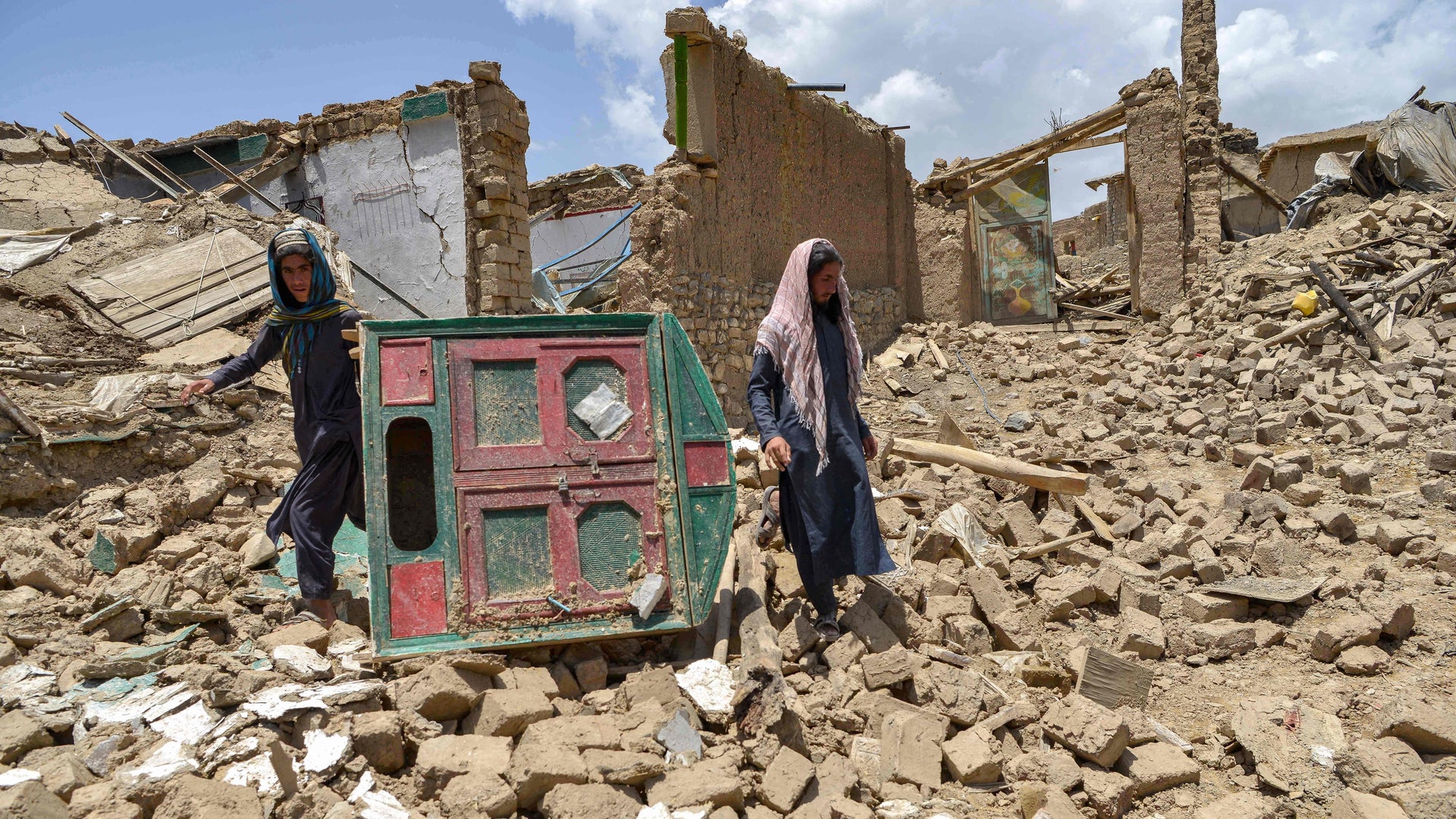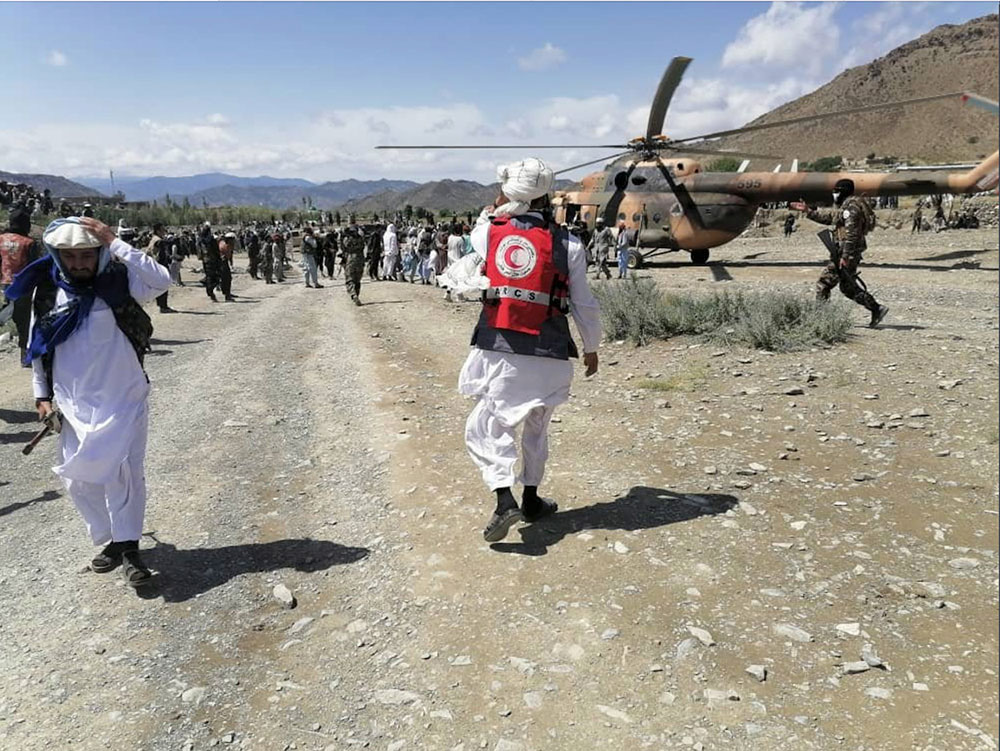Kabul, Afghanistan — September 1, 2025:
A massive earthquake struck Afghanistan early Monday morning, sending shockwaves across several provinces and leaving a trail of devastation. The tremor, recorded at 6.9 magnitude by the U.S. Geological Survey, hit at approximately 4:37 a.m. local time with its epicenter near the Hindu Kush region, a seismically active zone known for frequent and destructive quakes.

Death Toll and Injuries
Initial reports indicate that more than 1,200 people have been confirmed dead, while over 3,500 have sustained injuries of varying severity. Officials fear the numbers could rise significantly as rescue teams continue to search through the debris of collapsed homes and public buildings. Many victims remain trapped beneath rubble in villages that are difficult to access due to blocked roads and landslides triggered by the quake.
In Faizabad, doctors are treating the wounded on hospital floors and in outdoor courtyards, using makeshift equipment due to shortages. Ambulances are running continuously, transporting injured people from outlying areas. Health officials warn that without rapid international medical assistance, preventable deaths will rise in the coming days.
Massive Structural Damage
Entire neighborhoods have been flattened. Mud-brick homes, common in rural Afghanistan, crumbled instantly under the shaking. Schools, mosques, and marketplaces collapsed, leaving scores of people trapped. Roads are fractured, electricity is cut in many areas, and communications remain patchy.
Eyewitnesses describe scenes of panic: “It felt as if the ground was opening beneath us,” said a Kabul resident. “Everyone ran outside barefoot, crying and praying.” Though Kabul experienced less structural damage, the psychological shock has been profound.
In the northern provinces, particularly Badakhshan, Takhar, and Kunduz, the devastation is far worse. Landslides triggered by the quake buried entire hamlets, isolating communities from aid. Helicopters dispatched to assess the damage report entire valleys cut off, with smoke rising from collapsed homes and villagers signaling desperately for help.
Humanitarian Crisis
The earthquake has unleashed a humanitarian disaster on top of Afghanistan’s ongoing economic and political turmoil. The United Nations Office for the Coordination of Humanitarian Affairs (OCHA) estimates that over 150,000 people have been displaced, many of whom are now camping in fields, streets, and open mountainsides. Families sleep under plastic sheets or in the open, braving cold winds and chilly nights.
Food and clean drinking water are scarce. Aid workers warn of an impending health crisis, with waterborne diseases such as cholera posing a grave threat. Malnourished children, already at high risk, are particularly vulnerable. Aid convoys are attempting to reach remote areas, but blocked roads and fuel shortages hinder the speed of delivery.
International organizations stress the need for immediate airlifts of supplies. “We are racing against time to prevent a second wave of tragedy caused by hunger and disease,” an OCHA spokesperson said.
Voices of Survivors
Survivors recount harrowing experiences of loss and survival. Abdul Qadir, a farmer from Badakhshan, described the moment of impact: “The walls shook, and before we could run, the roof collapsed. I lost my wife and two children in seconds. My son was crying for his mother as I pulled him out with my bare hands.”
In Takhar, a teacher named Mariam recalled how her school crumbled during morning prayers. “We tried to get the children out, but the building collapsed. Many of my students are gone. I can still hear their voices in my ears.”
Families are digging with their hands, using sticks and shovels in desperate attempts to find loved ones. Villagers are organizing collective burial sites as the death toll climbs.
National and International Response
The Taliban-led government has appealed for international assistance, stating openly that Afghanistan cannot handle the crisis alone. “We urgently appeal to the international community, humanitarian agencies, and neighboring countries for aid, medical teams, and rescue equipment,” a spokesperson said in Kabul.
The United Nations, Red Crescent, and Médecins Sans Frontières have already deployed emergency teams. Pakistan and Iran have sent rescue experts, heavy machinery, and medical aid. Turkey has pledged to send search-and-rescue specialists, while India has offered medical supplies and temporary shelters. The European Union and the United States have expressed readiness to send humanitarian aid despite ongoing political tensions with Afghanistan’s rulers.
However, aid workers note that Afghanistan’s rugged terrain, poor infrastructure, and political complexities complicate logistics. International organizations are calling for guarantees of safe access to affected areas without interference.
Long-Term Challenges
Afghanistan sits at the collision zone of the Indian and Eurasian tectonic plates, making it one of the world’s most earthquake-prone regions. But decades of war, poverty, and neglect have left the country ill-prepared to withstand such disasters. Most rural homes are constructed of mud bricks, lacking any earthquake-resistant design.
“This tragedy highlights the urgent need for disaster-resilient infrastructure,” said a Kabul-based engineer. “Stronger building codes and awareness could save thousands of lives in the future.”
Economically, the disaster compounds an already dire situation. With international sanctions, a crippled economy, and limited banking systems, Afghanistan faces immense hurdles in financing reconstruction. Entire agricultural communities have lost livestock, seeds, and tools, threatening long-term food security.
Psychological Toll
The psychological scars of the earthquake are as deep as the physical damage. Aftershocks continue to rattle nerves, sending people running outdoors in fear. Children wake screaming from nightmares, while adults sit silently, overwhelmed by grief. Mental health professionals caution that untreated trauma will have long-lasting consequences.
Aid groups are attempting to set up trauma counseling services, but Afghanistan’s lack of trained psychologists makes this a daunting task. Survivors are in urgent need not only of food and shelter but also of emotional support.
Education and Displacement
Schools in affected provinces have either collapsed or been converted into temporary shelters. Thousands of children face indefinite disruption to their education. “We fear that this disaster will push many children permanently out of school, forcing them into labor or early marriage,” warned UNICEF.
The displacement crisis has also strained host communities. Families who survived the quake are sharing scarce resources with relatives and neighbors, but tensions are rising as food and water supplies run low.
A Call for Global Solidarity
As Afghanistan reels from one of the deadliest earthquakes in its modern history, the global community faces a moral imperative. Despite political divisions, aid must transcend borders. “This is not about politics but about humanity,” said a UN representative. “Thousands of lives depend on swift action.”
Stories of resilience are emerging amid the devastation. Communities are pooling resources, volunteers are rescuing trapped neighbors, and religious leaders are urging solidarity. Despite immense challenges, hope remains alive in the courage of ordinary Afghans.
Conclusion
The September 1, 2025 earthquake has left Afghanistan in ruins, with thousands dead, tens of thousands injured, and hundreds of thousands displaced. The coming days and weeks will determine whether lives can be saved and whether international assistance can prevent secondary disasters such as disease outbreaks and famine.
For a nation already burdened by decades of hardship, this tragedy has struck at its very core. Yet, the resilience of its people, combined with timely international solidarity, offers a path toward recovery. Afghanistan stands at a crossroads: to either sink deeper into despair or rise from the rubble with renewed strength and hope.
(Click notification ![]() for more updates)
for more updates)
By: V.Harishram
”Stay true, bring facts to you”

